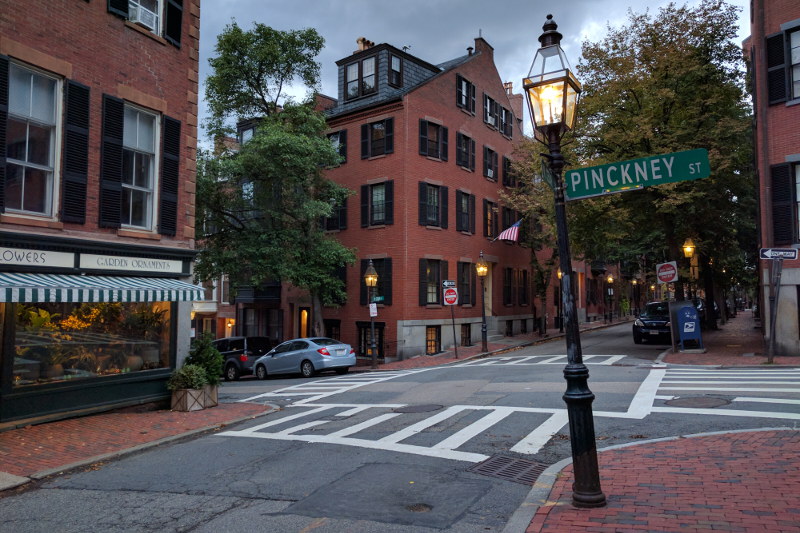At the time of settlement (1630), Boston was known as “tri-mount” for the three hills that made up the area. The middle of these three hills would eventually become Beacon Hill… then known as pastureland. Eventually “tri-mount” would become Tremount, which is a well-known thoroughfare in the city.
Beacon Hill is literally named after a tar bucket beacon that sat at the top of the hill. When needed, the beacon was lit to alert locals of pending danger, disaster, or plague.
For most of the 16th and 17th centuries, the area remained open pasture. This changed after the Revolutionary War and with the creation of the Mount Vernon Proprietors who were commissioned to develop the land around the newly built Massachusetts State House.
Many of the original Mount Vernon Proprietors built their own properties on the south slope of the hill (Acorn, Pinckney, Chestnut, Revere, Louisburg Square) thus making the area a sophisticated, desirable residential neighbourhood. Even today Beacon Hill contains the most expensive homes in Boston… many of which are owned by celebrities, public figures, congressmen, and high ranking state officials.
Acorn Street
The most famous of Boston’s Streets is Acorn Street. The interwebs and travel guidebooks sites tell us that Acorn Street is one of the most photographed streets in the world.
I’m not sure if I believe that, but I will say that Acorn certainly is very beautiful. It radiates a warm, homey, “American Dream” feeling and is perfectly photographic.
But, watch your ankles as you attempt to walk up or down the street; the street was created using very round, uneven stones. It’s difficult to walk on.
